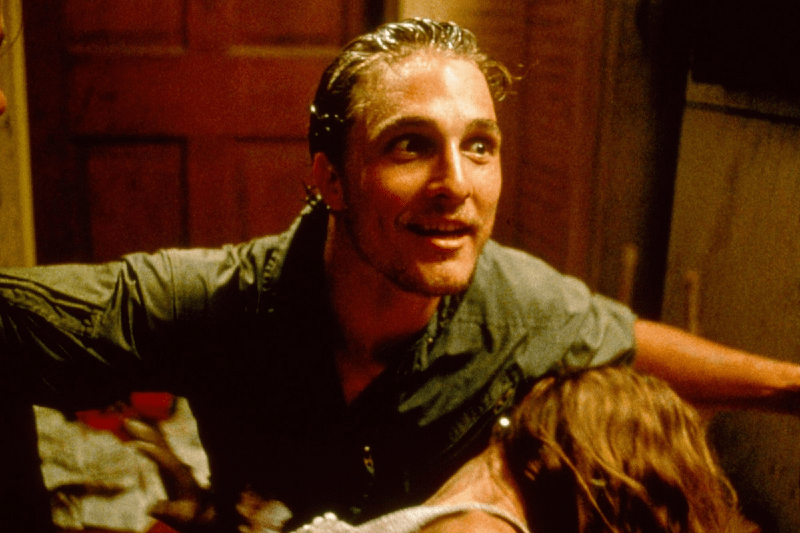Though I was aware of the Texas Chainsaw Massacre series as a concept within pop culture, as a kid I was too afraid to ever actually watch it. It wasn’t until around 2009 that I had my first encounter with the franchise, finally witnessing the horrors of Leatherface and his cannibalistic family when I sat down to watch Texas Chainsaw Massacre: The Next Generation. While this installment may seem like an odd way to be introduced to the world of Texas Chainsaw, it worked perfectly for a fearful child. The original Texas Chain Saw Massacre felt grimy and bleak, a humorless depiction of the atrocities people are able and willing to commit — a very unappealing movie for a 12-year-old me. The Next Generation, however, was over-the-top and exaggerated in a way that never felt real enough to scare me, but was memorable enough to make an impact.
Texas Chainsaw Massacre: The Next Generation (TCM: TNG) is the fourth installment in the franchise, written and directed by co-writer of the original film, Kim Henkel, and starring a young Renée Zellwegger who plays Jenny, a quiet girl with an abusive homelife. She gets caught up in the Slaughter family’s sick experiment on prom night, after her and her friends get into an accident in the woods. The film was panned by critics and is generally maligned by the public, currently sitting at 16% on Rotten Tomatoes, with one of the major complaints being it’s essentially a mediocre rip-off of the original. While we do get the classic moments — our final girl jumping out of the second story window, a helpless victim getting hung on a meat hook, Leatherface running and swinging a chainsaw — its story and overall tone are starkly different.
In the third act, the movie strongly departs from the original when it is revealed that the Slaughter family is working on orders from a secret society to create a spiritual experience through terror. Even with all the film’s absurdity, this twist comes out of nowhere and is under-explained. While it feels out of place within the framework of the movie, a distrust of people in power and the control they have is a theme that is further explored within the horror genre as technology continues to advance and social media becomes more prominent.
As someone born in the late ‘90s, it felt like we were growing up alongside technology. The internet — and society's relationship to it — was constantly developing, and we were left to navigate it unsupervised. I went from using dial-up internet in elementary school, to experiencing the rise of social media platforms like Youtube and Twitter in middle school, and then became fully dependent on an iPhone by high school. The creation of new media, along with a more accessible internet, led to society becoming more collectively aware. However, it also led to a generation of people desensitized to sex and violence at a young age.
Growing up in a post-9/11 society meant consuming media that was made in response to the horrific events. This led to a trend of spectacle and excess, with many horror films of the aughts gleefully embracing violence, often with a self-aware tone. It is in this way TCM: TNG acts as a precursor to not only the tone and trends of 2000’s horror, but also the common complaints people have with the remakes and sequels of the decade.
A frequent criticism regarding the major horror franchises is the diminishing quality of its later entries. However, that is exactly why they can work as an easy entry point for young movie fans. As someone who was too skittish to appreciate the horror genre until my teens, I perceived classic horror as something I couldn't handle, leading me to avoid it. Instead, I found myself gravitating toward some of the many aughts-era sequels or remakes that were easier to digest. My first introduction to Freddy Krueger was because of Freddy vs Jason, my Prom Queen scream queen was Brittany Snow, and when I thought of the murders in Texas it was Jenny and Vilmer that sprung to mind.
I find it unreasonable to expect younger generations to begin their horror education with the classics, and unfair to expect them to cherish the original films over what they grew up on. Gen Z discovered horror cinema during the remake boom of the 2000s and came of age during the legacy sequel trend of the 2010s, two forms of film reboots that are distinctly connected to their originals. It is frustrating to hear so many remakes or sequels dismissed by the horror community because they aren’t as good as their sacred classics. At the end of the day, if it led to you wanting to explore more of the horror genre, who cares what your entry point was?
Remakes, reboots, and sequels provide a familiar frame to hold something new and different, allowing stories and characters to evolve with society and represent a fresh audience. While these movies do not always succeed in execution or storytelling, many of them work as an introduction to the genre for a younger audience. Though important to understand the roots of the genre and respect what came before, sometimes the over-the-top or arguably mediocre sequels work to entice a scared kid to explore horror. As an adult, I can understand that Texas Chainsaw Massacre: The Next Generation is by no means a perfect film or even necessarily a great installment in the franchise. As a kid, however, the movie helped me to understand the fun that can be had within the genre and the thrill of excitement that can be caused by Leatherface and his chainsaw.






